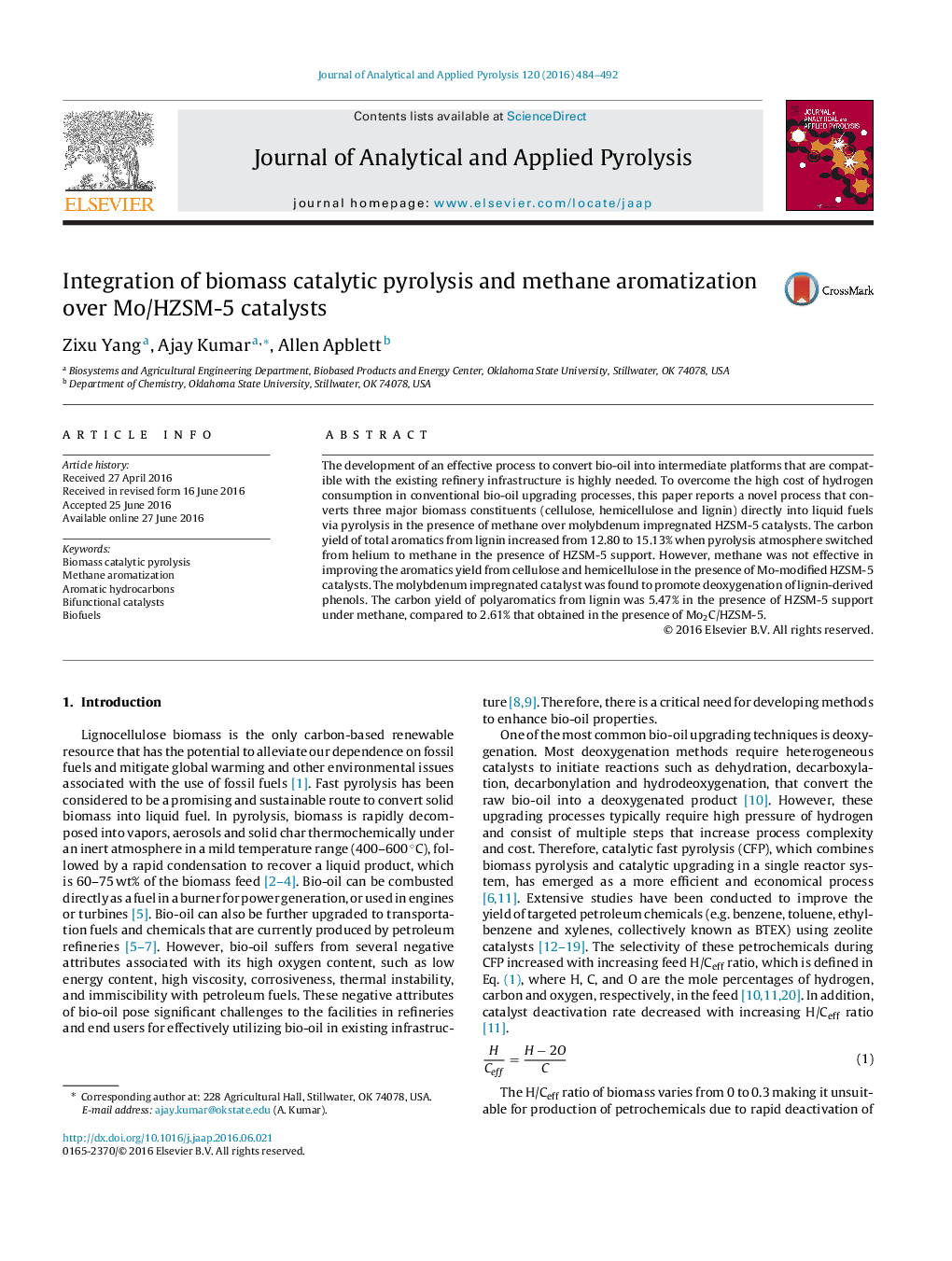| Article ID | Journal | Published Year | Pages | File Type |
|---|---|---|---|---|
| 1196576 | Journal of Analytical and Applied Pyrolysis | 2016 | 9 Pages |
•Aromatic hydrocarbons yield of cellulose > hemicellulose > lignin.•Mo species provided active sites for deoxygenation resulting in less polyaromatics.•Methane enhanced deoxygenation of lignin-derived phenols.•Methane did not improve aromatics yield from cellulose and hemicellulose.
The development of an effective process to convert bio-oil into intermediate platforms that are compatible with the existing refinery infrastructure is highly needed. To overcome the high cost of hydrogen consumption in conventional bio-oil upgrading processes, this paper reports a novel process that converts three major biomass constituents (cellulose, hemicellulose and lignin) directly into liquid fuels via pyrolysis in the presence of methane over molybdenum impregnated HZSM-5 catalysts. The carbon yield of total aromatics from lignin increased from 12.80 to 15.13% when pyrolysis atmosphere switched from helium to methane in the presence of HZSM-5 support. However, methane was not effective in improving the aromatics yield from cellulose and hemicellulose in the presence of Mo-modified HZSM-5 catalysts. The molybdenum impregnated catalyst was found to promote deoxygenation of lignin-derived phenols. The carbon yield of polyaromatics from lignin was 5.47% in the presence of HZSM-5 support under methane, compared to 2.61% that obtained in the presence of Mo2C/HZSM-5.
